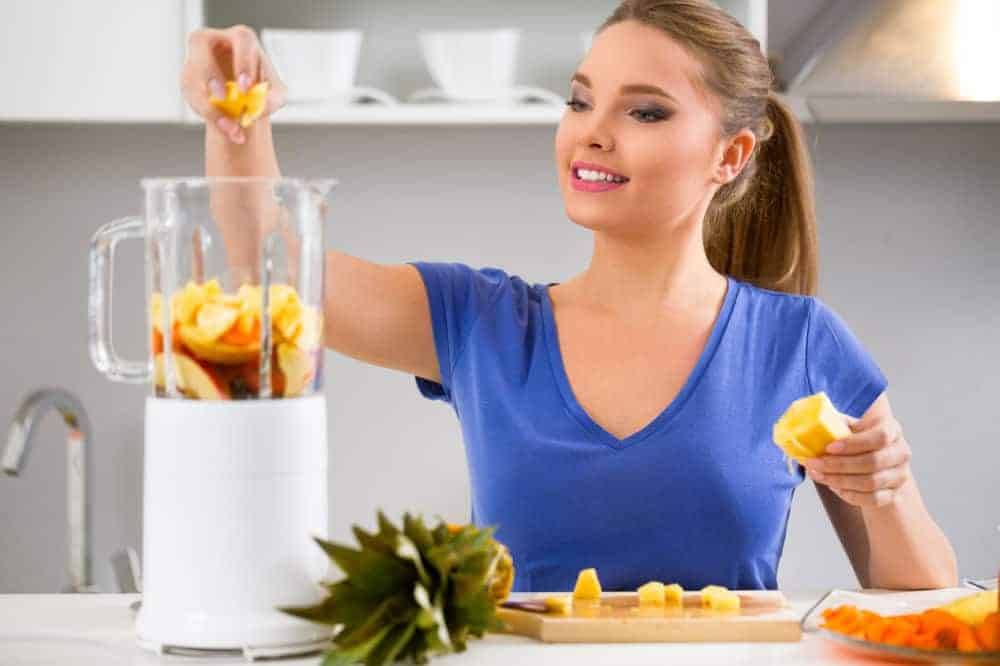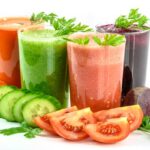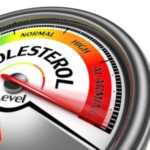
Does juicing remove fiber and is that important? Have you been trying to add more vegetables and fruits to your diet without success?
If so, you should consider fruit juicing. This is an excellent method for adding more fruits and raw vegetables to your diet, enabling you to enjoy the benefits that they can provide.
Is Fiber Removed When Juicing?
However, there is a common worry that juicing can eliminate the fiber content of these foods. So, does juicing remove fiber? To understand, we must delve into the topic in detail.
Yes juicing does remove fiber. Discover why this happens and what you can do with the fiber and learn about the different types of fiber.
To understand whether juicing will remove the fiber, you need first to understand what juicing is. Juicing is a process by which the liquids from fresh fruits and vegetables are extracted.
The juice, so produced, will contain most of the phytonutrients, minerals, and vitamins present in the fruits and vegetables.
As for the fiber content, the juices will have some amount of it. However, it will be mainly the soluble fiber content of the foods. The insoluble fiber does not make its way into the juices. Instead, it will remain behind in the pulp. See here for reviews of the best juicer to use for pulp free juicing.
The Types of Fiber
Fiber is an essential part of the daily diet. It is a variety of carbohydrates. However, unlike other carbohydrates such as sugars and starches, fiber cannot be digested by the body. In fact, it does not provide any food energy or calories.
Fiber cannot be broken down by the human digestive system and absorbed. Instead, it will be travel through the digestive system, in, more or less, the same condition.
There are two kinds of fibers present in fruits and vegetables.
Insoluble Fiber
Commonly known as roughage, insoluble fiber is often found in the skins, seeds, and stalks of fresh fruit and vegetables. Whole grains and nuts often contain an ample amount of insoluble fiber as well.
It does not dissolve in water, but it can absorb a significantly large amount of liquids, bulking up in the process. It adds bulk to the waste that passes out of the digestive system. It has several benefits.
Insoluble fiber makes you feel fuller and, thereby, staves off hunger pangs. As such, it plays a significant role in weight control. If you are juicing for weight loss then this is the fiber that will help you lose weight and enjoy healthy living.
It also ensures regularity in bowel movements when consumed in enough quantities. Insoluble fiber can be helpful in the treatment of health issues in the colon such as fecal incontinence and constipation.
Soluble Fiber
Soluble fiber can dissolve in water forming a viscous gel-like substance. It is found in a variety of foods such as oats, chia seeds, and legumes. In the digestive system, the viscous gel formed by soluble fiber can have several benefits.
This gel is capable of trapping various compounds, making it harder for the body to absorb them. This includes cholesterol.
As a result, the overall cholesterol levels can be reduced which decreases the risk of heart disease. In other words, soluble fiber can protect your heart and cardiovascular system.
Soluble fiber can also provide diabetes protection. It is capable of slowing down the body’s ability to break down and absorb carbs and sugars.
Additionally, soluble fiber, to a certain degree, can decrease hunger pangs and improve your bowel movements. Good for the digestive tract if you have a slow digestion problem.
Why Do You Need Both Soluble and Insoluble Fiber?
Does juicing remove fiber, which type of fibers does it remove, and does it really matter?
Consuming soluble, as well as insoluble fiber, is important. When researchers and doctors talk about the benefits of dietary fiber, they are always referring to soluble and insoluble types.
As per studies, it has been determined that consuming a greater amount of dietary fiber is capable of reducing the risks of death due to any cause. Those who consumed the most fiber had a 22% reduction in the death risk compared to people who ate the least fiber every day
This effect was more pronounced when the focus was narrowed down to deaths caused by respiratory diseases, heart diseases, and infectious diseases. In these success stories, a meal plan which included healthy diets high in fiber brought about a 50% risk reduction or greater.
How To Get Fibre While Juicing
While you do get the soluble fiber of fruits and vegetables while juicing, it is by no means enough. You need the insoluble fiber as well to derive all the benefits that fiber is capable of providing.
While juicing, the insoluble fiber is left behind in the pulp. Some pulp should be added to the juice before consumption so as to get some insoluble fiber as well.
What Are The Side Effects Of Juicing?
Juicing is certainly a good option, but it does have its limitations. To determine if it is the right choice, you must understand its pros and cons.
Pros of Juicing
One of the biggest benefits that juicing provides is its ability to ensure that you consume a lot of raw foods like fruits and vegetables every day. It can be difficult to make sure that you consume the daily recommended amount of fresh raw vegetables and leafy greens.
Juicing and blending is a great way to help you with this and ensure you have a healthy living plan.
Since nearly all kinds of fruits and veggies can be juiced, you can ensure a proper nutrient intake every day without having to eat every single item.
Juicing makes it easier for the body to absorb vitamins and other nutrients as well. The body requires more effort to process insoluble fiber, making it harder to absorb the nutrients present in the fruits and vegetables.
The elimination or reduction of insoluble fiber ensures that the body can quickly absorb the essential compounds. The health benefits you can get from juicing are many.
Cons of Juicing
Juicing gets rid of the fiber content which means you won’t be able to enjoy the benefits it can provide. This is a major disadvantage. Juicing is also incapable of helping you lose weight, so juicing for weight loss is pointless.
So does juicing remove fiber and cause you problems? Yes, it does and you need to have a plan to take care of the lack of fiber that juicing provides in your juices. You need to have a healthy lifestyle that will boost your immune systems and provide the nutrition you need.
If you do juice fasts only, your body will start craving solid foods due to the lack of satiety. You may end up drinking more juice, which increases the calorie count. A diet comprising of only juices will also be lacking in protein. Your muscle mass will start dropping as a result.
Finally, fruits and vegetables have natural sugar. Since you are juicing them, you will be using more fruits. This increases the overall sugar level as well. You have to keep an eye on your blood sugar levels to make sure they remain within limits.
This can be a huge issue for people suffering from diabetes as blood sugar surges can wreak havoc on their immune systems, and high blood pressure can cause numerous health problems.
You should not ignore juicing or juicing with a blender completely. Vegetable juices like carrot juice, for example, do have health benefits.
Fruit juices are easier than eating the fruit, and there are juice bars to make it easy for you. You simply need to be careful while consuming them. Stay away from fad diets and take steps to increase your fiber consumption to get the best results for your health.
Healing Properties of Juicing
Juicing may add some variety to your diet and allow you to better absorb nutrients from fruits or vegetables. You may create juice at home using a juicer, try a fashionable juice bar, or buy freshly squeezed juices in the supermarket. A good juicer is a hurom cold press juicer. Get all the facts about drinking juice and find out if it’s right for you.
Juicing requires using a juicing machine or equipment to turn raw fruits and vegetables to a liquid. Home juicing machines might cost anyplace from $30 dollars to over $300 dollars. By using special blades, the majority of juicers chop up your veggies or fruits to tiny pieces and spins them in a way that separates the juice from the pulp, which eliminates most of the fiber. Masticating juicers are best for juicing vegetables and leaving a drier pulp behind.
You may inquire at local shops or consult Consumer Reports or get a juicer buying guide to get the juicer that is best for you. There are various health benefits of drinking fresh-squeezed fruits and vegetables, and it’s a terrific way to add nourishment from the raw foods that you generally wouldn’t eat. So it is easier to consume more raw vegetables and leafy greens as a result.
Fruits and vegetable juices maintain most of the minerals, vitamins, and plant compounds that could be located from the entire versions of these foods. These vitamin minerals may help protect against coronary disease, cancer, and various inflammatory diseases, such as rheumatoid arthritis.
Valuable compounds known as flavonoids and anthocyanins are abundant in a wide range of fruits and vegetables and shield against oxidative cell injury, which causes cellular damage and is due to exposure to substances and contamination.
Beware claims that juicing can be the only way to remain healthy, that you should steer clear of solid foods, or that juicing can be a substitution for medical diagnosis or treatment. There is not much research out there that demonstrates that juicing is far healthier than eating whole fruits and vegetables, however, juicing does make them easier to consume on a daily basis. Some advocates for juicing might claim that your body absorbs more nourishment from juices than the whole fruits since the fruit’s fiber gets in the way. There isn’t much research on the market that supports that claim.
Your digestive tract was designed to handle fiber and extract nourishment from a wide range of foods that juicing provides. Also, fiber is essential for digestion functions and has a plethora of health advantages. When juicing your fruits or vegetables, try to make just as much fresh squeezed just that you can drink in one sitting.
The freshly squeezed juice which isn’t consumed right away can develop bacteria and cause food poisoning. It is recommended you drink your juice right away. The freshly squeezed juice is better for your health. Exposure of the juice to air and varying temperatures makes a breeding ground for bacteria along with other pathogens that can’t only make you sick but threatens the nutritional value of the juice as well.
So does juicing remove fiber?
Yes, but now you know how to get the fiber back into your system. Juice your fruits and veggies. Enjoy your juicing and stay healthy! Click here for reviews of the best pulp free juicer you can get.






